An exciting, truly communicative Spanish program that follows a project-based, content-focused approach





An exciting, truly communicative Spanish program that follows a project-based, content-focused approach




KLETT WORLD LANGUAGES is a publishing house specializing in print and digital instructional materials for learning and teaching world languages.
Our mission is to help students become global citizens by developing their intercultural and critical thinking skills through language learning. We aim to help students learn and use language in real-life situations by creating engaging and meaningful content that sparks their curiosity and motivates them to learn.
We strongly believe that teachers play a key role in language learning, and part of our mission is to support them and to provide ample opportunity for professional development.
Having them is not enough. We live by them.
Because everyone on the core KWL team has a background in education and works closely with educators and students, our commitment goes far beyond our daily work. We understand the needs of educators and students and we are passionate about looking for solutions and tools to help them succeed.
We are committed to providing high-quality print and digital content at affordable prices to all who want to learn a language. We guarantee lower prices for high-quality content and simple, easy-to-use technology.
We view languages as tools for communication and action. To learn a language and build authentic communicative competency, students need a realistic context, a true need to communicate, a focus on meaning, and the right linguistic resources. That is what we provide in our educational materials.
Our educational materials focus on the most current pedagogical methodology. They follow the ACTFL Guidelines for Proficiency, include Can-Do statements, and address the 5 Cs. Our digital resources provide original and authentic content via a simple and easy-to-use platform.
We see educators as our partners, and the core of our mission is to support them by providing professional development opportunities, highquality documents and activities, and instructor resources in an easily accessible format.
Our content is created to help students use language to communicate and interact with other communities and cultures both in the United States and abroad. Our books present a respectful, modern, and open-minded perspective of our world and its cultures that allows students to dismantle stereotypes and to cultivate an awareness of global concerns.
MAPAS is a four-level program designed for North American high school students learning Spanish at the introductory level. Its innovative design follows a project-based and content-focused approach. Its main goal is for students to build knowledge through explorative and expansive learning. The Spanish classroom becomes a space where students develop 21st-century skills, such as collaboration, creativity, critical thinking, and communication.

reasons why our workbooks are an effective tool for today's World Language classrooms!
Print workbooks provide a valuable break from screens, fostering tactile learning to boost understanding and retention.
Workbooks aid progress monitoring and targeted support, and empower student review.
Carefully-crafted activities integrate the 5 Cs throughout each unit.
Our print workbooks offer learning flexibility beyond the classroom and internet dependency.
Our print workbooks mirror our communication-focused approach: enhancing skills through activities!
The three modes of communication are integrated into the activities.


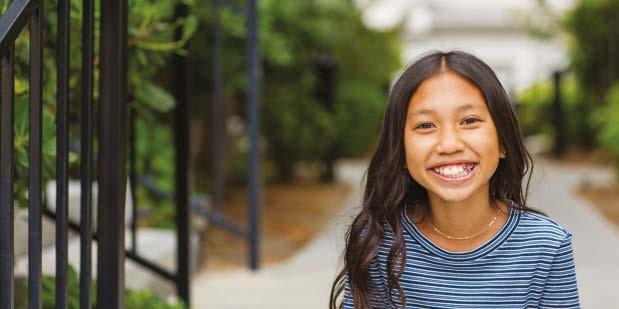


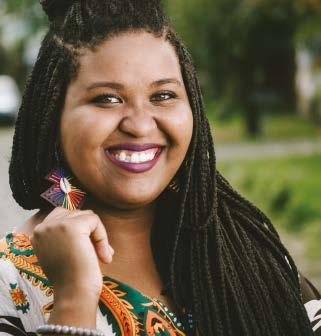
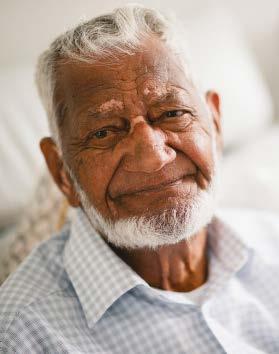
In this chapter, I will learn...
LEARNING OUTCOMES

CHECK-CIRCLE To introduce myself and others
CHECK-CIRCLE To exchange personal information (I)
CHECK-CIRCLE To talk about my Spanish class
VIDEO
CHECK-CIRCLE Hola, soy Marcela (interview)
VOCABULARY
CHECK-CIRCLE Activities to learn a language
CHECK-CIRCLE Interesting topics in a Spanish course
LANGUAGE STRUCTURES
CHECK-CIRCLE Subject pronouns (I)
CHECK-CIRCLE The present tense of regular verbs (I)
CHECK-CIRCLE The verbs ser and llamarse
CHECK-CIRCLE Nouns: gender and number
CHECK-CIRCLE Definite articles

CHECK-CIRCLE Alphabet and sounds
ORAL AND WRITTEN TEXTS
CHECK-CIRCLE Communication resources in the Spanish classroom
CHECK-CIRCLE Basic etiquette
CHECK-CIRCLE How to create a text
CHECK-CIRCLE Linguistic landscape (USA)
CHECK-CIRCLE Artistic heritage of the Spanish-speaking community in the United States
PROJECTS
CHECK-CIRCLE Group: to introduce ourselves to the class
CHECK-CIRCLE Individual: to introduce myself in writing on an online platform
Name Class Date
1. Información personal
A. Match this student’s personal details with the type of information it refers to by selecting an item in the first column and then the appropriate match in the second.

1. Lugar de origen
2. Escuela
3. Apellido
4. Nombre
a. Amanda
b. Rodríguez
c. Phoenix
d. Instituto de Secundaria Elena Poniatowska
B. Classify the following words under the right category.
Santo Domingo
Sánchez Alberto Carla
Name Class Date
2. La presentación de Hugo
A. Write the missing words or phrases from Hugo’s profile in social media into the correct blank.
décimo grado Instituto de Secundaria de Texas Hugo Martín Austin, Texas español Todo en todas partes al mismo tiempo
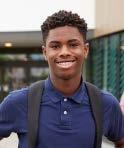
Me llamo (1) Hugo Martín . Soy de (2) y estudio en el (3) . Estoy en (4) y estudio (5)
Mi película favorita se llama (6)
B. Ahora haz tu propia presentación como Hugo.
3. Saludos, presentaciones y preguntas
Write the following words or phrases under the correct category: Para saludar (to greet); Para presentarse (to introduce yourself); or Para preguntar (to ask a question).
Buenos días Soy Lucas. Soy estudiante de español. Buenas tardes Buenas noches
¿Qué estudias?
Me llamo Lucas. ¿Cuál es tu apellido? ¿Cómo te llamas?
Para saludar
Para presentarse Para preguntar
¿Qué estudias?
Hola
Name Class Date
4. Preséntate al / a la profesor(a)
A. Answer the following questions about yourself.

1. ¿Cómo te llamas?
2. ¿De dónde eres?
3. ¿Qué estudias?
4. ¿Dónde estudias?
5. ¿Qué materias estudias?
B. Record yourself answering the questions to introduce yourself to your Spanish teacher.
5. Estudios y cognados
A. Match a word or phrase in the first column with its English cognate in the second.
1. Antropología
2. Biología
3. Teatro
4. Danza
5. Educación
6. Farmacia
7. Historia
8. Inglés
9. Literatura
10. Medicina
11. Mercadotecnia
12. Sociología
13. Ciencias de la Computación
a. English
b. History
c. Theater Studies
d. Biology
e. Pharmaceutical Sciences
f. Dance
g. Sociology
h. Medicine
i. Education
j. Anthropology
k. Marketing
l. Computer Science
m. Literature
B. And you, which studies do you find interesting? Write sentences with your personal information.
Para mí es interesante... / son interesantes
Para mí es interesante
Name Class Date
6. Estudios: pronunciación
Record yourself reading these words. Practice the words several times before recording them. This will help you to avoid mistakes.
1. Economía
2. Biología
3. Ciencias de la Computación
4. Danza
5. Educación
6. Medicina
7. Hola, soy Marcela
7. Farmacia
8. Historia
9. Antropología
10. Inglés
11. Literatura
12. Teatro
Watch the video and complete the information about these students.



Se llama . Es de y estudia un doctorado en Historiografía cultural . Su palabra favorita es
Él es
Es de y estudia
Su palabra favorita es “utopía”
Su nombre es . Es de Montevideo (Uruguay) y estudia
Su palabra favorita es
A. Complete the words to see a list of the topics covered in Los temas de la clase de español from page 9 of the textbook. The first letter has been provided.
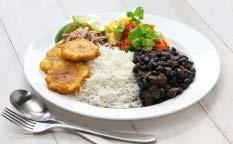

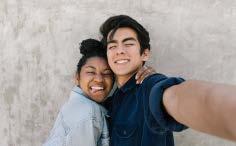



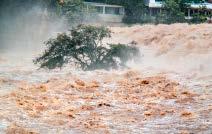


Name Class Date
B. Order the previous topics according to your interests, 1 being the one which most interests you and 9, the least interesting.
C. Are you interested in one or several topics that are not on the list? Which? Search online for their names in Spanish and write them down here.
9. Temas interesantes
Listen to the audios. Then indicate whether the statements are true or false.
1. Para este estudiante son interesantes la historia, la música y la gastronomía.
2. Para ella son interesantes los problemas del medioambiente.
3. Para él es interesante la literatura.

Name Class Date
10. Para mí es interesante / Para mí son interesantes
What are Óscar’s and Amanda’s interests? Write the following nouns under the category that best completes the sentence Para Óscar es interesante or Para Amanda son interesantes…
la música el cine el arte
la literatura

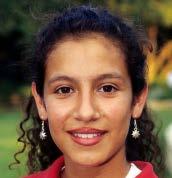
las celebraciones las tradiciones las ciudades los problemas del medioambiente
la música
11. Los números del 1 al 20
Write out the word for each number.
Name Class Date
12. Los pronombres personales y las personas del verbo ser
A. Look at these photos and read the conversations. Then, complete the conversations with the missing subject pronouns or forms of the verb ser

— Buenos días, yo soy Ana, ¿ eres...?
— Yo soy Arturo, encantado.

— Hola, soy Marta, ¿ son también nuevos en la escuela?
— Sí, somos nuevos; yo soy Daisy y es Carlos.
— ¡Encantada! ¿Son de aquí, de Bogotá?
— Yo sí, pero Carlos, no; es de Cali.

— Hola, ¿ustedes estudian biología?
— No, somos del grupo de teatro, pero ellos sí, ellos son estudiantes de biología.

— Buenos días, ¿ es el nuevo profesor de español?
— Sí, y tú Verónica, ¿no?

— Ana, Clara, ¿ustedes de aquí?
— No, somos de Medellín, pero ella sí.
— Sí, yo soy de esta ciudad.

— ¿ son de la Escuela Cinco de Mayo?
— No, nosotros somos de la Escuela Izcalotzin, pero ellas sí, ellas son de la Escuela Cinco de Mayo.
Name Class Date
B. Now write the pronouns under the correct category of the form ser.
ella usted él ustedes nosotros ellos ellas nosotras yo tú soy eres es somos son tú
13. Las personas del verbo
Write the missing subject pronouns in this conversation.
Hola, soy Luis. ¿ ustedes son también estudiantes de Historia? ¡Encantado! ¿Son de aquí, de Los Angeles?

14. Pronombres personales (I)
Sí, somos nuevas. soy Clara y es Tina. sí, pero Tina no. es de Washington.
Match a Spanish personal pronoun in the first column with its English equivalent in the second.
1. vosotros
2. tú
3. vos
4. usted
5. él
6. ella
7. nosotros
8. nosotras
9. ellos
10. ellas
11. ustedes
12. yo
a. we
b. they
c. he
d. they
e. you
f. you
g. I
h. you
i. she
j. we
k. you
l. you
ATENCIÓN
Vosotros is the plural form of you . It is used exclusively in Spain. The rest of the Spanish-speaking world uses ustedes
The pronoun vos (and its related verb forms) is used instead of tú in informal contexts in Argentina, Uruguay, Paraguay, Costa Rica, and Andean areas of Venezuela and Colombia.
Name Class Date
15. Pronombres personales (II)
Write the English pronoun that corresponds to each pronoun in Spanish.
1. ellas ➜ they
2. nosotros ➜
3. tú ➜
4. él ➜
5. yo ➜
16. Pronombres personales (III)
6. ellos ➜
7. usted ➜
8. ella ➜
9. ustedes ➜
Mark whether the following sentences are true (V) or false (F).
1. In Spanish there are formal and informal personal pronouns. x
2. In Spanish, there is a masculine and a feminine version of the pronoun I.
3. Usted is the formal version of you.
4. In Spanish, there is a masculine and a feminine version for all formal pronouns.
5. Usted and ustedes are conjugated as third-person pronouns (i.e. él, ella, ellos, ellas).
17. Los pronombres del verbo (I)
Combine the following items to create coherent sentences.
habla en español escuchan música soy de México estudiamos inglés te llamas Roberto





Name Class Date
18. Los pronombres del verbo (II)
Fill in the blank spaces with the correct pronoun.
1. Daniel y Marta leen todo el tiempo. Él porque es estudiante de literatura; porque trabaja en una librería.
2. somos profesoras.
3. Hola, soy Eduardo, de Argentina. ¿Y , de dónde eres?
4. estudio Medicina.
5. ❍ ¿Quiénes son tus nuevas compañeras de clase? ● Mira, son : Laura, Ana y Nora.
6. Me llamo Antonio y estudio noveno grado. ¿ cómo se llaman?
19. Verbos regulares en presente (I)
A. Combine the elements in these columns to build sentences, and write them down.
Nosotras
Yo Usted Tú Ellos ves trabaja estudiamos hablan escucho Medicina inglés y francés hip-hop en una empresa argentina películas en español
Nosotras estudiamos Medicina.
Name Class Date
B. Now use the previous verbs to write five sentences about yourself.
ver:
trabajar: estudiar: hablar: escuchar:
20. Verbos regulares en presente (II)
Pay attention to the pronoun, and fill in the blanks with the correct conjugation for each verb in parentheses.
1. Ustedes (hablar): hablan
2. Nosotros (leer):
3. Ella (escribir):
4. Tú (ver):
21. Verbos regulares en presente (III)
5. Yo (trabajar):
6. Usted (escribir):
7. Ellas (leer):
8. Nosotras (estudiar):
A. Carlos talks with a friend about the activities he and his classmates do to learn Spanish. Fill in the blanks with the correct conjugation of each verb in parentheses.
Los estudiantes (1) leen (leer) textos. La profesora (2) (escribir) emails.
Nosotros (3) (trabajar) en grupo en la clase de español.
Algunos (some) compañeros (4) (escuchar) música en español. Yo (5) (ver) videos y series en español.
¿Tú (6) (hablas) en español con tu profesor?
B. What do you do to learn Spanish? Write it down.

Name Class Date
22. Verbos regulares en presente (IV)
Build coherent sentences by reorganizing the items as needed and conjugating the verbs. Sentences must start with a capital letter.
1. Alicia emails escribir Alicia escribe emails.
2. nosotros con un profesor hablar
3. libros yo leer
4. ustedes en Miami vivir
5. estudiar un tema interesante tú
23. El verbo ser
Mark the correct pronoun and conjugation of the verb ser to create complete coherent sentences.
1. Yo / Tú / Él / soy / son de Bolivia.
2. Nosotros / Ellas / son / sois / somos buenas estudiantes.
3. Yo / Tú / Usted / sois / es profesor.
4. Yo / Él / Ella / eres / es mi compañero de clase.
5. Ustedes / Nosotras / son / somos / eres amigos del colegio.
6. Nosotros / Ustedes /es / somos / son profesoras de matemáticas.
24. El verbo llamarse (I)
Complete these sentences with the correct pronoun from llamarse.
1. Hola, me llamo Lucas, ¿ustedes cómo llaman?
2. Mi profesora de español llama Elena.
3. Ellos son mis compañeros de clase y llaman Marco y Anthony.
4. – Perdona, tú llamas Alberto, ¿verdad?
– No, llamo Alfredo.

5. Buenos días, chicos. Somos las nuevas estudiantes de esta clase y llamamos María y Sara.
6. Y usted, profesor, ¿cómo llama?
Name Class Date
25. El verbo llamarse (II)
Underline the correct words to properly conjugate the verb llamarse with each pronoun.
1. Yo se / me / te / nos / llamamos / llama / llamo / llamas / llaman
2. Tú se / me / te / nos/ llamamos / llama / llamo / llamas / llaman
3. Él, ella, usted se / me / te / nos / llamamos / llama / llamo / llamas / llaman
4. Nosotros, nosotras se / me / te / nos / llamamos / llama / llamo / llamas / llaman
5. Ellos, ellas, ustedes se / me / te / nos / llamamos / llama / llamo / llamas / llaman
26. Ser y llamarse (I)
Complete the chart with the right conjugation of these irregular verbs.
SER LLAMARSE yo soy tú
él, ella, usted es nosotros/-as vosotros/-as sois os llamáis ellos, ellas, ustedes se llaman
27. Ser y llamarse (II)
Complete the following conversation by conjugating the verbs in parentheses.
❍ Hola, (1) me llamo (llamarse) Juan, ¿y tú?
● Yo (2) (ser) Sofía, ¡encantada!
❍ ¿De dónde (3) (ser), Sofía?
● (4) (ser) de Lima, Perú.
❍ ¡Ah, qué interesante! ¿Y tu familia también (5) (ser) de Perú?
● No, mi papá (6) (ser) de Chile, mi mamá de Colombia y mis hermanos . (7) (ser) de Ecuador. ¡Nosotros (8) (ser) una familia muy (very) internacional!
Name Class Date
28. El plural de los nombres
Form the plural of the following nouns by adding -s or -es.
1. la clase: las clases
2. el compañero: los
3. el país: los
4. el profesor: los
5. el problema: los
6. la celebración: las
7. la estudiante: las
8. la ciudad: las
9. el lugar: los
10. el tema: los
11. la universidad: las
29. El género de los sustantivos
ATENCIÓN
To form the plural, we add: an -s to nouns that end with a vowel: la clas e ➜ las clase s el compañer o ➜ los compañero s la letr a ➜ las letra s
-es to nouns that end with a consonant: la activida d ➜ las actividad es el paí s ➜ los país es
Consider the rule rather than the exception to the rule, and identify whether the following endings are usually femenine, masculine, or both. Write each ending in the correct group.
30. Los artículos
Brenda writes about herself. Fill in the blanks with the correct article: el, los, la, las

Soy peruana-americana. Perú es el país de mi papá y Estados Unidos, de mi mamá.
Estudio en instituto. materias que me gustan (that I like) son: literatura, educación e historia. Para mí son interesantes problemas medioambientales y tradiciones de otras culturas. También música.
Name Class Date
31. Género y número: personas
Complete the table with the missing forms of the following nouns referring to people. Don’t forget the ñ, when needed.
el profesor las profesoras la compañera
32. Género y número: objetos, lugares, ...
Write the plural form of the following nouns referring to objects, situations, ideas, etc.
1. el país: los países
2. la letra: las
3. el lápiz: los
33. Género y número: artículos
4. la actividad: las
5. el nombre: los
6. la playa: las
Fill in the blanks with the correct article: el, la, los, las
1. la clase
2. clases
3. libro
4. libros 5. playa 6. playas 7. actividad 8. actividades

34. Cursos y materias: artículos
Write the names of the studies under the right category according to the article they need. inglés ciencias de la computación negocios química finanzas teatro biología
la los las inglés
Name Class Date
35. Género y terminaciones
A. Write the nouns under the category that corresponds to their grammatical gender. Pay attention to the endings. 7. editora 8. estudiante 9. compositora 10. director 11. escritora 2. científico 3. diseñadora 4. cantante 5. escultor 6. pintora
1. actor Femenino
B. Now write at least five names of famous people (or people you know or are interested in) who have these professions. You may search online and add some information.
Un actor: Tom Holland. Es un actor de Estados Unidos.
36. Actividades de la clase de español
A. Look at the icons and complete the sentences by writing the correct verb into the blank. ¿Qué hacemos en clase?
Escuchamos Hablamos Trabajamos Escribimos Leemos
Escuchamos audios y música en español. 1 en parejas. 2 textos del libro Mapas 1 3 sobre temas interesantes. 4 correos electrónicos (emails) al / a la profesor(a). 5
Name Class Date
B. Which of the previous activities are important for you? Write it down. Para mí, es importante…
C. Now record yourself, and send your recording to your teacher so they can know what is interesting for you in Spanish class.
37. Temas del curso de español
A. How much do you know about the Spanish-speaking world? Write the following elements under the correct category. You may search online if necessary.
Revolución cubana
Pau Gasol Puebla
Lago Atitlán Remedios Varo Fernando Botero Valparaíso Día de los MuertosLucrecia Martel Inti Raymi El reguetón El vallenato Lydia Valentín Glaciar Perito Moreno Las pupusas El 5 de mayo
La geografía
La historia y la política
Revolución cubana
B. Add more elements to these categories.
Name Class Date
38. Recursos para comunicarnos en la clase de español (I)
Read the following conversation, and underline the correct expressions to complete it.
❍ Buenos días / Hasta luego / Buen fin de semana, clase, ¿cómo están? Mi nombre es Adriana Ruz y soy su nueva profesora de español.
❍ Perdone / Gracias / De nada, ¿puede repetir / qué significa / cómo se escribe su nombre?
❍ Sí, claro, Adriana Ruz.
● Y su apellido, ¿cómo se dice / cómo se escribe / cómo se pronuncia?
❍ Erre, u, zeta.
● ¿Cómo se pronuncia / Qué significa / Cómo se escribe?
❍ Se parece a “tooth”.
● Perdone / Gracias. / De nada.
❍ Perdona / Gracias. / De nada.
39. Recursos para comunicarnos en la clase de español (II)

Write the corresponding letter of each category in the questions.
a. Pedir permiso (asking for permission) b. Pedir información (requesting information)
c. Pedir algo (requesting an action)
1. a ¿Puedo ir al baño?
2. ¿Puede usted repetir, por favor?
3. ¿Cómo se dice book en español?
4. ¿Puede deletrear universidad, por favor?
5. ¿Qué significa página?
6. ¿Puedes leer el texto, por favor?
40. Recursos para comunicarnos en la clase de español (III)
Match a question in the first column with the best answer in the second.
1. ¿Cómo se dice chemistry en español?
2. ¿Cómo se escribe historia?
3. ¿Qué significa baño?
4. ¿Qué tarea tenemos?
5. ¿Puede repetir, por favor?
6. ¿Cómo se pronuncia la a de amigo?
a. Suena como la u en hunt.
b. Escuchar el audio de la página 14.
c. Hache, i, ese, te, o, erre, i, a
d. Significa bathroom
e. Sí. La terminación -e puede ser masculina y femenina.
f. Se dice química
Name Class Date
41. Números: ¿cuántos estudiantes hay?
How many students are there? Write down the numbers in Spanish.






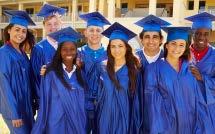




42. El abecedario y los sonidos
Write the names of the following letters. Listen to the Spanish alphabet if you need to check your answers.
43. Deletrea
Elizabeth is spelling out her personal information: name, surname, and place of origin. Choose the correct form for each word.
Elizabeth
1. e, ele, i, ce, a, be, e, te, hache
2. X e, ele, i, zeta, a, be, e, te, hache
Baker
1. be, a, ka, e, erre
2. be, a, cu, e, erre
Georgetown
1. ge, e, o, erre, ge, e, te, o, doble uve, ene
2. ge, e, o, erre, ge, e, te, o, uve, ene
44. Deletrea tus datos

Record yourself answering each question with a complete sentence. After each sentence, spell out your personal information.
1. ¿Cómo te llamas? Me llamo Jan. Jota, a, ene
2. ¿Cuál es tu apellido?
3. ¿De dónde eres?
4. ¿Dónde estudias?
Name Class Date
45. How to create a text
Order the steps to write a text under the correct phase of the process, and then check it with the text How to write a text on pages 16 and 17 of your textbook.
Organize your ideas using an outline Choose a topic Consider the target readers
Write a first draft
During the writing process
Check the masculine/feminine and singular/plural forms
Look for examples of similar texts
Organize your ideas using an outline
What type of text is it?
A form, an email, an infographic, a poster, an academic essay, a summary, an exam, a newspaper article, an advertisement, a poem, etc.?
What strategies are used in this type of text? Description, narration, exposition, argumentation, explanation, etc.? Very important: look for examples of similar texts to learn about their characteristics, register (level and style of language), vocabulary, and structures.
What topic(s) will be dealt with?
What is its purpose? Who are the target readers and what are their expectations?
Does it require any particular format or design? Does it contain any images or graphics?
What is the length or number of words?
3 2 1
Organize your ideas
Consider writing as a process, not a product. First of all, take notes for your draft by brainstorming, using outlines, lists, etc.
Write a first draft
Write an initial version of your text. Use your notes and start to create a text. Don’t forget the type of text, the topic, the target reader, and the purpose.
Write a second draft
Review your first draft, making any necessary changes. In order to do so, ask these questions about your text:
• Does it fit the characteristics of this type of text?
• Is/Are the topic(s) clear? Are they relevant?
• Did you accomplish your goal? Are the target readers’ expectations fulfilled?
• Are the design, format, and length of the text adequate?
46. Un paisaje lingüístico bilingüe
A. Complete the text Un paisaje lingüístico bilingüe on page 18 of your textbook with the missing words.
latinas español ejemplos culturas públicos multiculturalismo
Un paisaje lingüístico bilingüe
El (1) multiculturalismo es una de las características más distintivas de los Estados Unidos. Se pueden ver (2) de la coexistencia de diferentes (3) en el paisaje lingüístico, es decir, la presencia de texto escrito en espacios (4) El uso del (5) en las ciudades de los Estados Unidos da visibilidad a las comunidades (6)
B. Write under each picture the translation of its message.
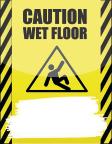

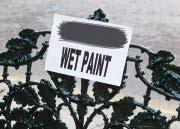



Name Class Date
47. Hablar de nuestra identidad
Write each of the following items in the correct category.
Frida Kahlo Lewis ver videos Nancy leer textos Diego Rivera el arte trabajar en grupo la gastronomía
Filadelfia Joan Miró Miami la historia Austin Laura
Lugares de origen
Nombres
Artistas
Temas la gastronomía
Actividades de clase
Name Class Date
48. Cursos y materias
A. Match the pictures with the correct subjects.




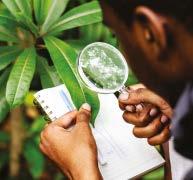
a. 4 la genética
b. la antropología
c. la danza
d. la farmacia



e. la biología
f. el español
g. el derecho
h. las ciencias de la computación
B. Think about one word that you connect with these subjects. Search online for its equivalent in Spanish and write it down.
Name Class Date
49. Números
Listen to the audios. First, write the number you hear, and then write them down in Spanish.
a.
b.
c.
d.
e.
f.
g.
50. Años y números
What do we call high school years in Spanish? Match the phrase in the first column with its equivalent in the second.
1. El año 1 es
2. El año 2 es
3. El año 3 es
4. El año 4 es
a. el grado doce.
b. el grado once.
c. el grado nueve.
d. el grado diez.

Name Class Date
La ciencia
El deporte
La música
El medioambiente
La historia y la política
El cine
La gastronomía
La geografía Las ciudades
El arte Las tradiciones
51. Crucigrama
Complete the crossword with the vocabulary from the map. 3 4
1. Es una industria importante en Hollywood.
2. Lees sobre el s. XIX.
3. Hablas sobre el gobierno.
4. Es un tema importante para nuestro (our) futuro.
5. Chicago, Ciudad de México, Panamá City, San Juan y Buenos Aires son
6. Gracias a la tenemos antibióticos.
52 ¿Qué materias oyes?
A. Listen to the audios and match them with the corresponding image.




B. Write sentences with the expressions of A.
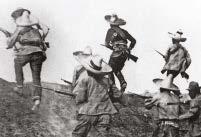
53 Temas del curso de español
Match each word with its examples.
1. gastronomía
2. arte
3. deporte
4. geografía
5. ciudades
a. Frida Kahlo, Pablo Picasso, Diego Rivera
b. fútbol, tenis, atletismo
c. tamales, gallopinto, burrito
d. San Juan, Bogotá, Caracas
e. río, montaña, océano
escuchar (to listen to)
audios (audio)
música (music)
ver (to watch)
videos (videos)
trabajar (to work) en parejas (in pairs)
en grupos (in groups)
leer (to read)
textos (texts)
libros (books)
imágenes (at pictures)
en español (in Spanish)
hablar (to speak) con un(a) compañero/a (with a classmate) sobre un tema (about a topic)
escribir (to write)
textos (texts)
correos electrónicos (emails) en las redes sociales (in social networks)
Match the following class activities in Spanish with their English equivalent.
1. escuchar canciones
2. ver videos
3. escribir correos electrónicos
4. trabajar en parejas
5. hablar sobre un tema
a. to work in pairs
b. to watch videos
c. to listen to songs
d. to speak about a topic
e. to write emails
55 Continúa las series
Continue the series of frequent word combinations with the correct elements. canciones en francés películas grupos música con un(a) profesor(a) textos correos electrónicos
audios > canciones > escuchar
videos > imágenes > ver
textos > libros > leer correos electrónicos > escribir en español > en inglés > hablar > > pareja trabajar en
56 Ordena las letras
Unscramble these words to build frequent word combinations.




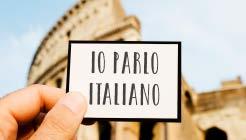

Name Class Date
Reflect on your learning.
The first five questions ask you to reflect on the present chapter. The last two invite you to look through the next chapter and anticipate the content.
1. Some interesting topics or information that I learned in this chapter:
2. Some challenging parts of this chapter:
3. Some words or expressions that I remember:
4. An activity that I enjoyed:
5. A strategy that helped me learn:
6. The topic of the next chapter:
7. Words (in Spanish) that I associate with next chapter’s topic:
All images and texts are protected and licensed for MAPAS.
© 2023 by Difusión, S.L. All rights reserved
Would you like to learn more about our K-12 catalog?
Please scan the code!

Instagram: klettwl
Twitter: KlettWL
Facebook: KlettWL
YouTube: KlettWorldLanguages
LinkedIn: klettwl
Spotify: Klett World Languages
TikTok: klettwl
Pinterest: klettwl